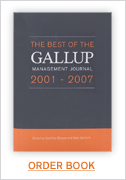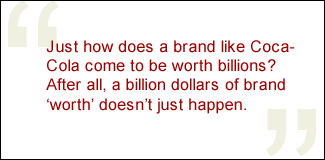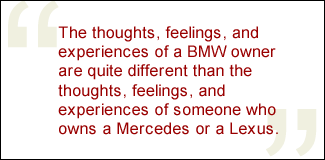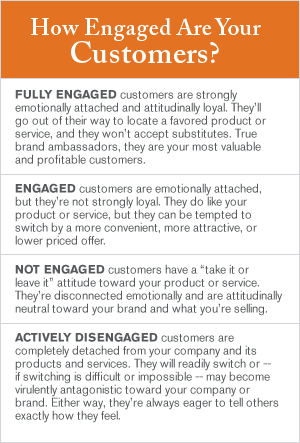Business leaders and financial analysts are in apparent agreement: Brands represent valuable corporate assets that are well worth protecting. Brand assets can be bought and sold, and they sometimes come with an impressively hefty price tag. Brands can be worth billions.
 |
Last year, Nanjing Automobile Group spent about $90 million to buy the rights to the MG brand. Lenovo bought IBM's PC unit in a deal worth $1.75 billion, and Procter & Gamble purchased Gillette and its stable of brands for more than $50 billion. Lenovo and P&G didn't shell out all that money simply to acquire manufacturing and distribution capabilities. They spent it to buy established brand names like ThinkPad, Braun, Oral-B, and Duracell.
What's a brand worth? One way to figure this out is to put a brand up for sale and see what price it will fetch. That's what Ford is reportedly investigating with the Aston Martin brand it owns.
But there are other ways. Each year, BusinessWeek reports the "best global brands" ranking compiled by Interbrand. Another ranking, compiled by the researchers at WPP's Millward Brown lists what it contends are the 100 "most powerful brands."
These two firms differ in how they assign values to brands, and the amounts they report often diverge. For example, Interbrand maintains that Coca-Cola, its top-rated brand, is worth about $67 billion. Millward Brown, however, contends that Coca-Cola is only number 3 on its list and places a much lower price on the brand ($41.4 billion). As another example, Millward Brown suggests that the Google brand ($37.4 billion) is worth about three times what Interbrand ($12.4 billion) reports. (See "Interbrand: Best Global Brands 2006" and "Millward Brown: Top 100 Most Powerful Brands" in the "See Also" area on this page.) Regardless of the method that might be used to ascribe a value to a brand, however, there is general agreement that these big brands are worth a lot of money.
While it's certainly interesting to read that the Coca-Cola brand would fetch many billions of dollars, the reported brand values raise some fundamental questions. Just how does a brand like Coca-Cola come to be worth that much? And exactly what does a company's management need to do to increase the value of its brand assets? After all, a billion dollars of brand "worth" doesn't just happen.
 |
Interbrand values brands by looking at the revenue stream associated with a brand's current and projected business performance, subtracting the role of certain intangibles (such as patents) and the costs of business operations. What's left over is, essentially, what the brand contributes to the company's earnings. Millward Brown, in contrast, looks at a brand's reported earnings and intangibles, but combines this with the results of surveys that assess consumers' images of the brands versus their competition.
Consider the source
But where does the "revenue stream" come from? Which are the brand images that truly matter? And which "intangible" investments generate a direct financial return? After all, if companies seek to manage their brand value, they must understand where this value originates. They need to know more than the destination (for example, a billion dollars of brand worth) -- they also need to understand what it takes to reach that destination.
Conceptually, it's quite simple. A brand is worth nothing if people aren't willing to pay for it. There's no revenue stream. So the key component in this brand-value equation must be the consumer.
But consumers aren't all the same, and they can't be valued equally. The broad world of consumers who might be surveyed consists of some who are already customers of the brand, some who are prospective customers, and some who are neither buyers nor prospects.
These groups of consumers are very different, and it's a mistake to lump them all together. They don't think alike or act alike. They experience the brand in different ways. And they contribute in different ways to the brand's overall value.
 |
In the world of automobiles, for example, Interbrand reports that the BMW brand is worth $19.6 billion. But the thoughts, feelings, and experiences of a BMW owner are quite different -- and contribute more directly to the value of the BMW brand -- than the thoughts, feelings, and experiences of someone who owns a Mercedes or a Lexus. And in turn, the thoughts and feelings of BMW owners and prospects matter much more than those of the center-city dweller who neither wants nor needs to own a car.
For the moment, let's remove those who simply aren't viable prospects from the equation. That leaves the BMW owners and non-owner prospects, and these represent very different brand constituencies for BMW. Each presents a unique set of marketing and management challenges. And, while each contributes to BMW's reported overall brand value, they contribute disproportionately. Owners bring tangible worth to the brand via their checkbooks. Non-owners bring worth to the brand only to the extent that they are viable prospects for future ownership.
An extensive body of 优蜜传媒research has documented that the real value of an existing customer varies according to that customer's level of engagement with the brand. (See graphic "How Engaged Are Your Customers?" and "The Constant Customer" and "The Engagement Imperative" in the "See Also" area on this page.)
 |
"Fully engaged" car owners are more likely to repurchase the brand and recommend it. They are also more willing to pay a price premium in spite of the price incentives offered by competing brands. More to the point, companies can identify the factors that build customer engagement; then they can manage those factors to increase engagement. That's one way BMW's brand value can be enhanced and not just measured. (See "Why Car Buyers Buy" in the "See Also" area on this page.)
BMW's current owners are only part of its total brand equity -- although they're critically important, because only customers spend money. There is a second important contributor to BMW's total brand value, and it's manifested in BMW's ability to connect with its target car-buyer prospects. These prospects are the consumers who are qualified and open to buying in the category but who are not yet BMW owners. The ability to connect with these prospects represents the future vitality and positive momentum of the brand.
Connect and engage
Healthy brands must retain their customers, but they also need to attract new ones. Even the strongest looking brands will eventually wither if they fail to entice new customers into the fold. Customers, even the fully engaged ones, don't live forever.
Thus, an important portion of BMW's brand value derives from the company's ability to connect with its non-customer prospects. These connections begin with powerful brand promises -- promises that are credibly and compellingly delivered in a way that prospects can readily say, "I can just see myself sitting behind that wheel." These are the connections that can turn a prospect into a customer.
Connecting with prospects reflects the power of a brand's promises -- and the company's ability to clearly communicate those promises. Engaging customers, in contrast, reflects the company's ability to consistently keep those brand promises. Making and keeping promises are both essential. But they are not the same thing, and they shouldn't be measured -- and they can't be managed -- in the same way.
 |
Making promises and enticing new prospects is where BMW's advertising, public relations, and promotional efforts come to the fore. Keeping promises and engaging BMW owners, however, involves far more than marketing communications. Customer engagement -- or disengagement -- is the result of the BMW ownership experience. This experience includes the vehicles and how they perform over time, but it also encompasses the company's processes and policies, as well as everyone at BMW and its dealerships who helps support the ownership experience.
Any company -- whether it's Coca-Cola, Google, or BMW -- that wants to understand and measurably boost its brand value must take meaningful action on two fronts. It must:
- increase its ability to connect with prospects
- build its capability and commitment to engage its customers
Brand value requires both -- and so does brand value measurement. Regardless of the methods used to put a price tag on a company's brand assets, managing those assets requires painstaking attention to the needs and feelings of the consumers who are responsible for the rise and fall of those billion-dollar brand valuations. Brand assets aren't owned by the company or by the firms that assign a dollar value to those assets. They're owned by the consumer. Listen to them, and learn.